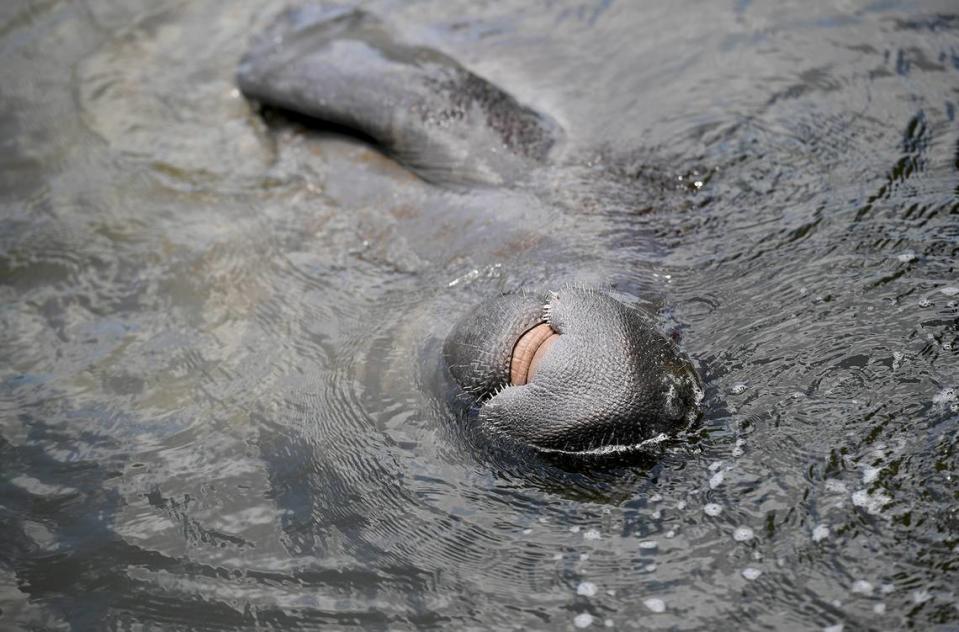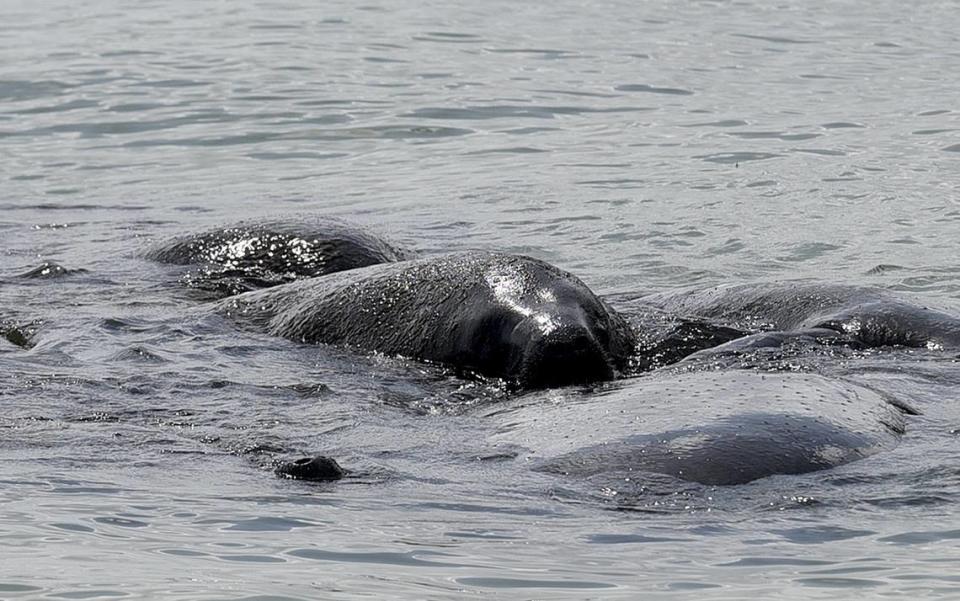More manatees than ever have died in 2021. Here’s how to help protect them.
November isn’t only a month for turkeys.
It’s also a month to celebrate the manatee — Florida’s state marine mammal.
Manatee Awareness Month started in 1979 when former Florida Gov. Bob Graham designated November for manatees, according to SaveTheManatee.org.
And it comes at a particular pivotal time. Manatee deaths are at the highest they’ve ever been, according to various reports.
The Florida Fish and Wildlife Conservation Commission announced in mid-November more than 1,000 Manatees have died in 2021, a number that is far greater than the previous record of 830 deaths reported in 2013.
A big contributor, according to a Tampa Bay Times report, is starvation, but human-related boating accidents are also detrimental to a manatee’s survival.
So here are some tips from the FWC on how to protect manatees, not only in November’s Manatee Awareness Month, but all year-long:
Pay attention to the signs
When boating, it’s important to stay alert to the sign postings in the water and understanding what they mean. There are four typical signs that are visible in manatee protection zones. They are:
Idle speed zone: This protected area prohibits boats from going any faster than necessary to ensure they do not produce any wake.
Slow speed zone: Boats must be fully off plane and completely settled and level in the water while moving with minimum wake.
Motorboats prohibited zone: Prohibits entry by power-driven vessels or those operating under mechanical means of propulsion.
No entry zone: Like the name implies, no entry, which means no boating, swimming, wading, fishing or diving activities.
How to view wild manatees
So you’re set for kayaking, paddleboarding, swimming or doing any other type of water activity in Florida’s numerous spots. How are you supposed to view manatees in the wild?
The FWC’s guide says to keep your distance to limit any disturbance. Remember, it’s their home. Don’t pursue, chase or disturb a manatee, and wear polarized sunglasses to see them better in the water.

If you get too close, speak quietly and avoid loud noises to avoid disturbance, the FWC guide said.
Also, do not separate a mother from her calf and pay attention to “swirling” when manatees dive. They make a large “footprint” on the water’s surface, the FWC guide said.
Do not feed
It’s a good rule of thumb for any wildlife, but it’s a move that can put manatees in danger.
Feeding or giving water to wild manatees can “alter their foraging behavior and attracts them to areas where they may be harmed,” the FWC guide said.
And never touch, remove or damage tag units, which helps researchers monitor those specific manatees.
Tips for paddlers, snorkelers and divers
Paddlers need to use caution when near seagrass beds, sanctuaries or refuge area boundaries since manatees frequent those areas.
The FWC guide advises you to “give manatees space to move freely in their habitat, paddle to avoid traveling over resting manatees because manatees must surface to breathe and will startle awake if you are in the way.”

Once startled, manatees will flee the area as quick as they can, which could put them in danger.
If you’re diving, switch to snorkeling gear when close to manatees as air bubbles from scuba gear can disturb them, the FWC guide said.
Know the seasons
Manatees love warm waters. So if you’re in the Gulf of Mexico during the summer months, odds are you’ll encounter a manatee or two. In the winter months, that’s less likely. At that time of the year, the colder water sends manatees toward the warmer spring water areas.
The time to spot manatees is April through October out in the Gulf, when the water is the warmest, according to VisitFlorida.com. From November through March, you’ll have to make your way to the spring areas that keeps the water temperature constant year round.
Other ways to help
Participating in coastal cleanup events, attend boating safety classes in person or online and disposing fishing line properly via recycling are all extra ways to protect the manatees.
The clear monofilament line, especially, can entangle manatees and other marine life such as sea turtles and birds.

